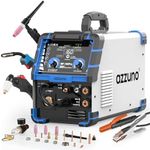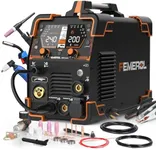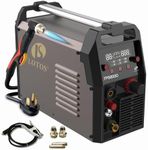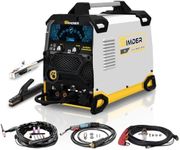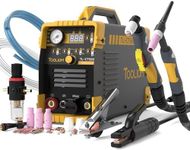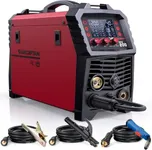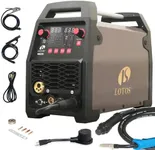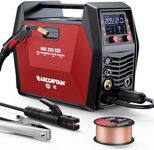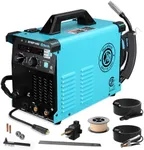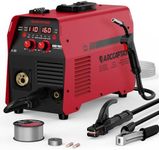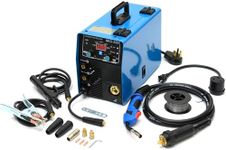Buying Guide for the Best Welder Plasma Cutter Combo
Choosing the right welder-plasma cutter combo can be a bit overwhelming, but with the right approach, you can find the perfect tool for your needs. This type of equipment is versatile and can be used for a variety of tasks, from cutting through metal to welding different materials together. To make an informed decision, it's important to understand the key specifications and how they relate to your specific needs. Here are the main specs to consider when selecting a welder-plasma cutter combo.Power OutputPower output, measured in amps, determines the thickness of the material you can cut or weld. Higher power output allows you to work with thicker materials. For light-duty tasks, a lower power output (20-40 amps) is sufficient. For medium-duty tasks, look for a power output in the range of 40-60 amps. For heavy-duty tasks, you will need a power output of 60 amps or more. Consider the types of projects you will be working on to determine the appropriate power output for your needs.
Duty CycleThe duty cycle indicates how long the machine can operate continuously before needing to cool down. It is usually expressed as a percentage of a 10-minute period. For example, a 60% duty cycle at 50 amps means the machine can run for 6 minutes and then needs 4 minutes to cool down. If you plan to use the machine for extended periods, a higher duty cycle is important. For occasional use, a lower duty cycle may be sufficient. Match the duty cycle to the intensity and duration of your typical projects.
Input VoltageInput voltage refers to the electrical power required to operate the machine. Common options are 110V, 220V, or dual voltage (110V/220V). A 110V machine is suitable for light-duty tasks and can be plugged into standard household outlets. A 220V machine is more powerful and suitable for heavy-duty tasks but requires a special outlet. Dual voltage machines offer flexibility, allowing you to switch between 110V and 220V depending on the task. Choose based on the power availability in your workspace and the nature of your projects.
PortabilityPortability is important if you need to move the machine frequently. Consider the weight and size of the unit, as well as features like handles or wheels that make it easier to transport. Lightweight and compact models are ideal for on-the-go tasks or if you have limited space. Heavier models may offer more power but can be cumbersome to move. Assess your workspace and how often you will need to transport the machine to determine the right balance between power and portability.
Cutting and Welding CapabilitiesDifferent welder-plasma cutter combos offer varying capabilities for cutting and welding different materials. Check the specifications to see the maximum cutting thickness and the types of materials (such as steel, aluminum, or stainless steel) the machine can handle. For welding, consider the types of welding processes supported, such as TIG, MIG, or stick welding. Match these capabilities to the materials and types of projects you plan to work on to ensure the machine meets your needs.
Ease of UseEase of use is crucial, especially if you are a beginner. Look for features like intuitive controls, clear displays, and easy setup. Some machines come with automatic settings that adjust the power and speed based on the material and thickness, which can be very helpful for novices. Consider how user-friendly the machine is and whether it comes with a comprehensive manual or customer support to assist you in getting started.
Safety FeaturesSafety features are essential to protect you while using the machine. Look for features like thermal overload protection, which prevents the machine from overheating, and voltage protection, which safeguards against electrical surges. Other useful safety features include a built-in air filter to keep the air clean and a sturdy, insulated casing to prevent accidental shocks. Prioritize machines with robust safety features to ensure a safe working environment.


